Household Cavalry and Royal Regiment of Fusiliers Museums London
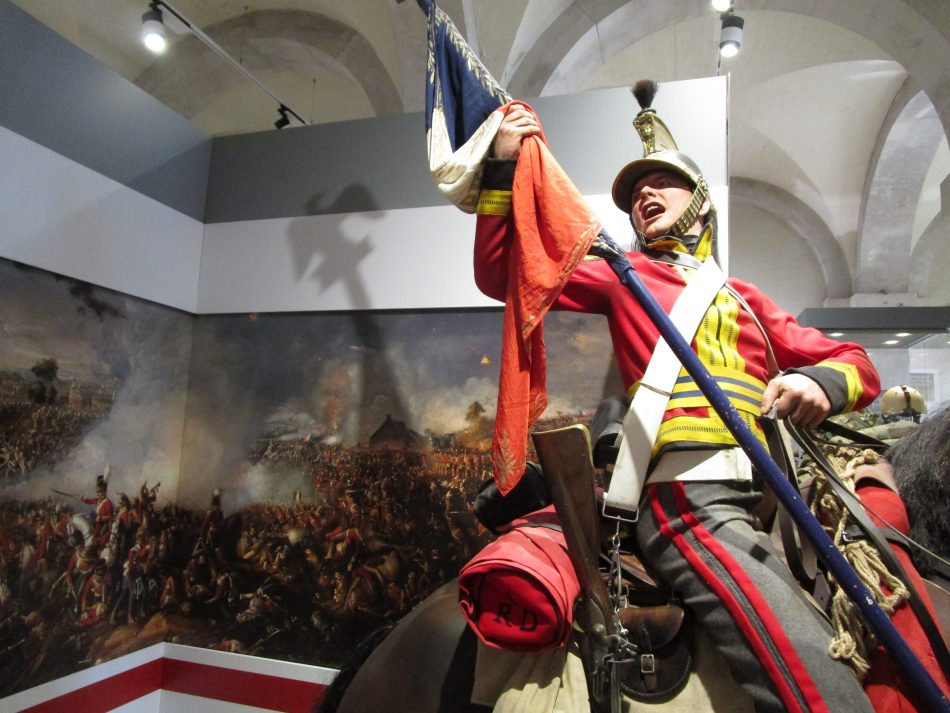
By Robert Kelly
Judging by YouTube and videos and photos from any tourist site, everyone who visits London seems to end up at Horse Guards to take a photo of the mounted troops on guard there. The reason there are so many tourists is because it is so centrally located. It’s not far from any of London’s attractions like Big Ben and Buckingham Palace. So do what I did.
Walk past the crowds, through the gate, and go around the corner to the Household Cavalry Museum (orange arrow). Or if you are walking up the Mall or through St. James Park from Buckingham Palace, cross the Horse Guards Parade directly to the museum (fuchsia arrow). Other nearby sites are circled in purple, such as the Mall, Churchill War Rooms, and 10 Downing Street.
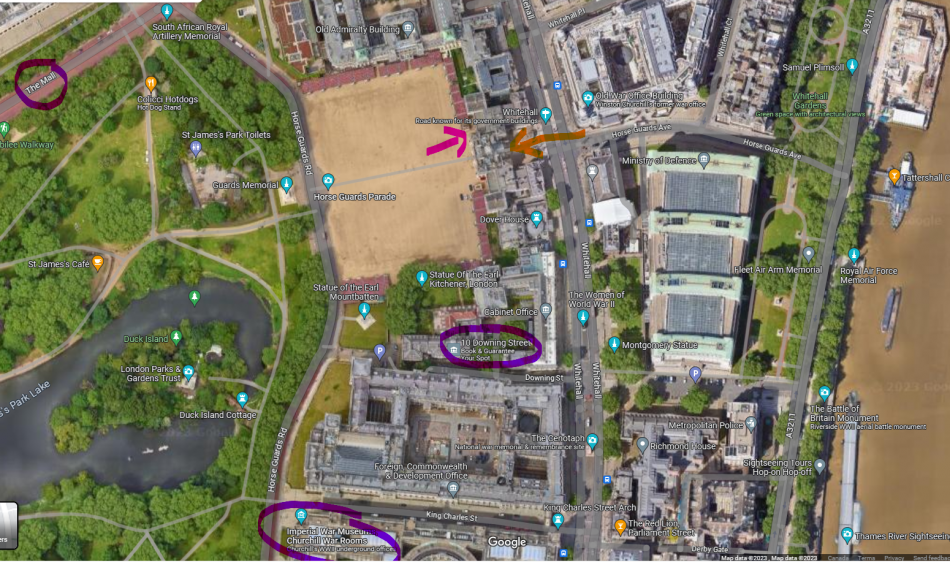
If you plan your visit right, you can follow the new mounted guard on its ride to Horse Guards. Every morning at 1100 hours, there is a changing of the Life Guard at Horse Guards. A new guard rides over from the Knightsbridge Barracks in Hyde Park and the old guard is relieved of their duty. I took this photo at the Wellington Arch as the new guard was on their way to conduct the ceremony. This YouTube video does a great job of explaining it all.
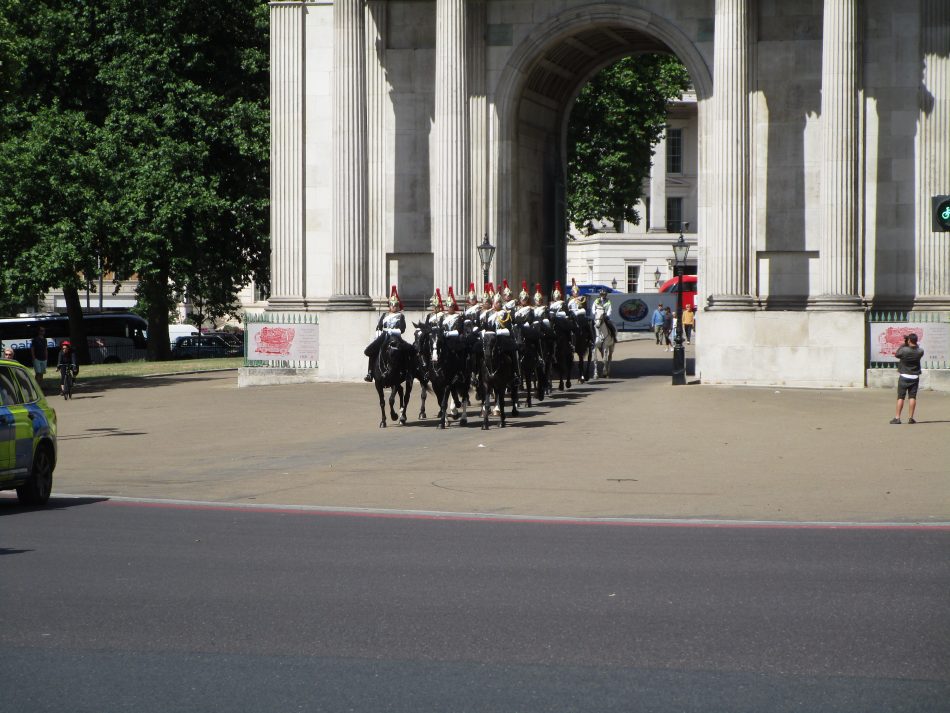
The view across Horse Guards Parade (fuchsia arrow on the map above)

Here is the front entrance point (orange arrow). This one shows a member of the Life Guards in their red tunics. Every day there seem to be new YouTube videos of crowds of tourist getting their photos taken with the guards (some of them not so well-behaved). It wasn’t that busy on this day. You merely walk through the gate between the two mounted soldiers, through the courtyard, and turn right when you get to Horse Guards Parade.
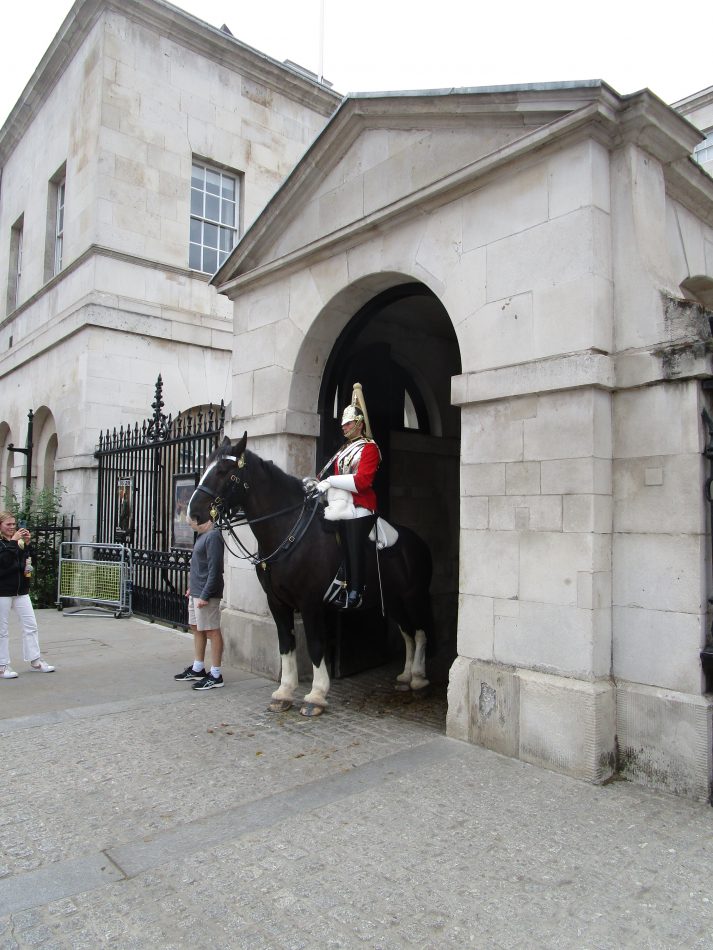
This soldier wearing the blue tunic is from the Blues and Royals. It was a little more busy this day.
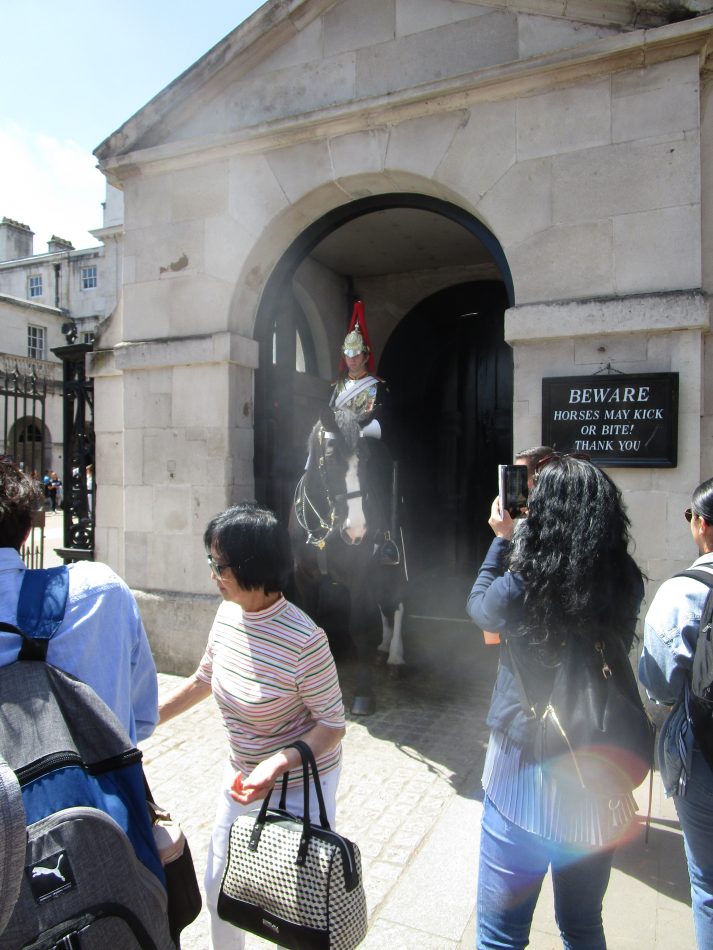
The understated entrance to the museum the day it was closed due to a transit strike.
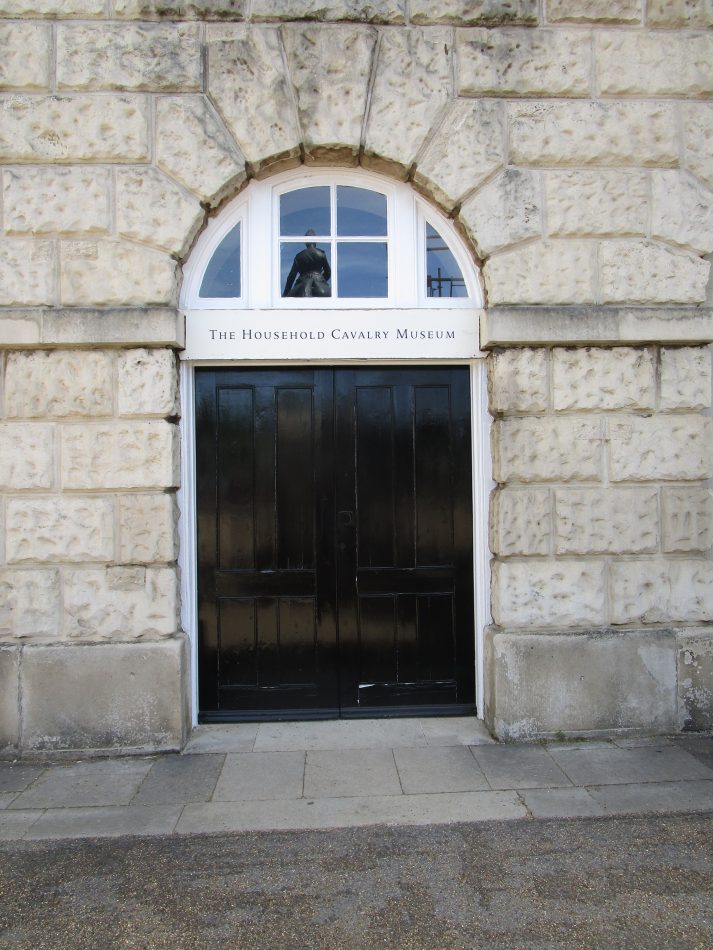
Entry to the museum will cost you 10 pounds. Fortunately, my Canadian military ID got me in for only 5 pounds.
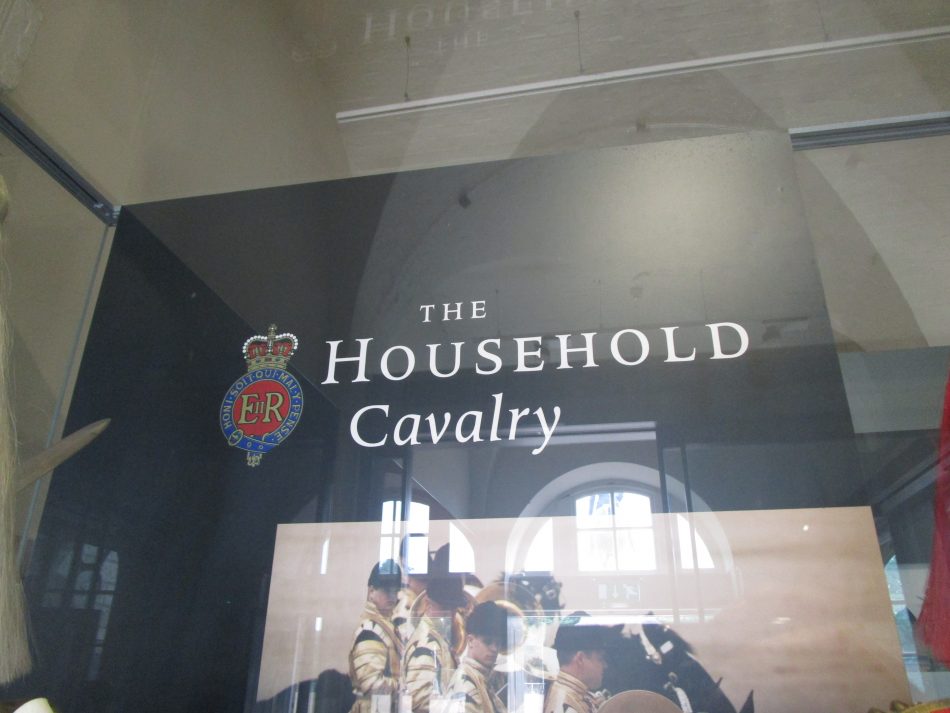
This is a mock-up of the stables. You can watch the soldiers at work in the real stables through the glass on the right. Unfortunately, no one was in the stables at the time that I visited.

Just a reminder that the soldiers are not just trained in ceremonial duties. They are actual reconnaissance troops.

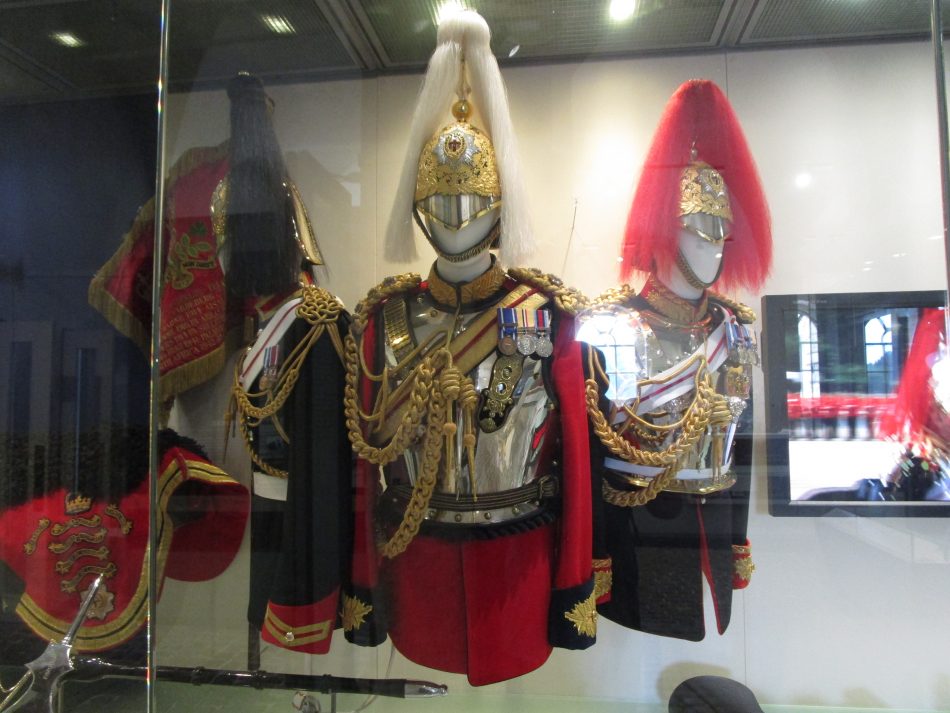
More artifacts including the ubiquitous silverware. Note the frock coat on the left. They are worn mainly by officers of the Household Division and Lieutenant Generals and above.

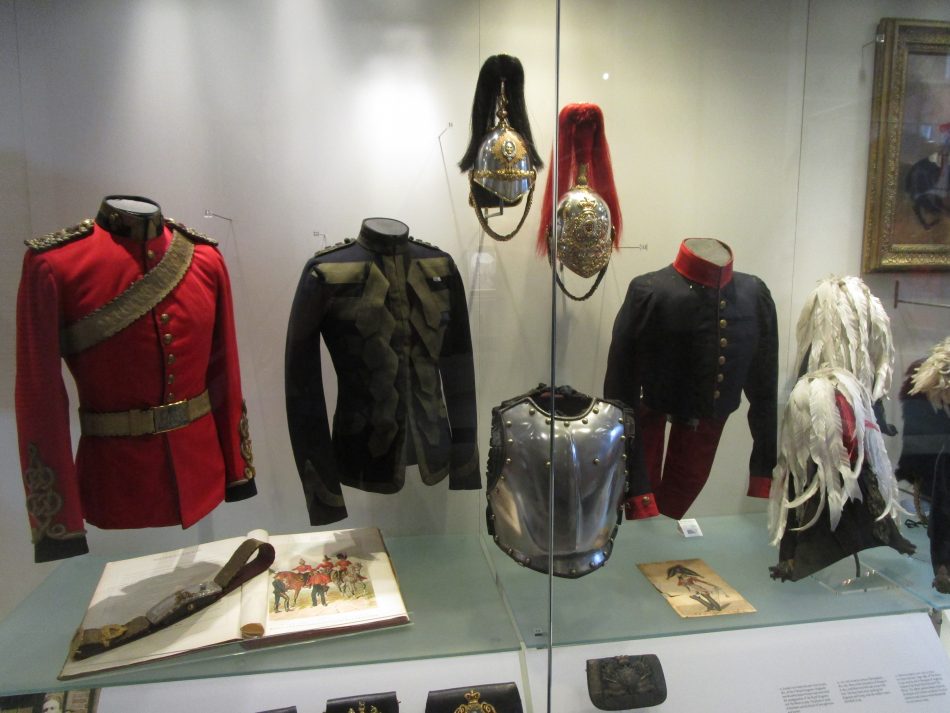
A bandsman uniform. These uniforms are handmade and take countless hours to complete.
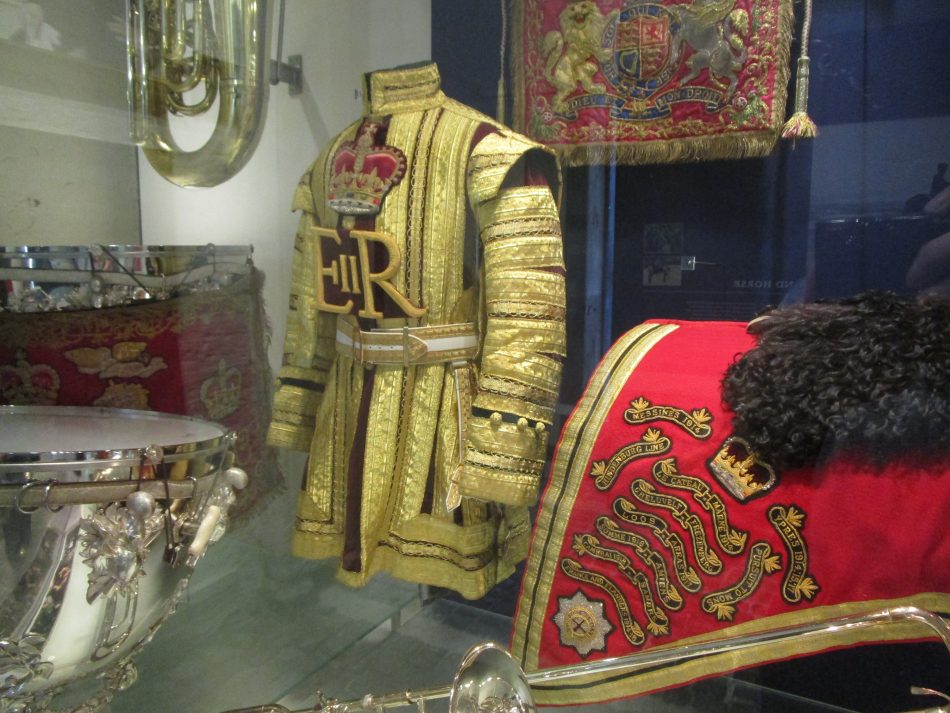
This display depicts the capture of a French eagle by the Royal Dragoons at Waterloo.

Here is a close-up of the eagle from the 105th Line Infantry Regiment. Unfortunately, it’s a replica. I believe the actual eagle is kept within the unit lines.

This is a collection of items from the Battle of Waterloo including the Waterloo Medal. This was the first medal issued by the British Government to all soldiers present during an action. The Waterloo Medal was also the first campaign medal awarded to the next-of-kin of men killed in action.


This shows the tools and items involved in maintaining a mounted soldier’s kit. Those boots aren’t patent leather. It takes constant effort to keep them shiny.

A farrier’s axe. It served two purposes. The spike could be used to put a badly injured horse out of his misery while the axe head was used to remove a dead horse’s feet. This is because individually marked hooves were required to update the register of horses.
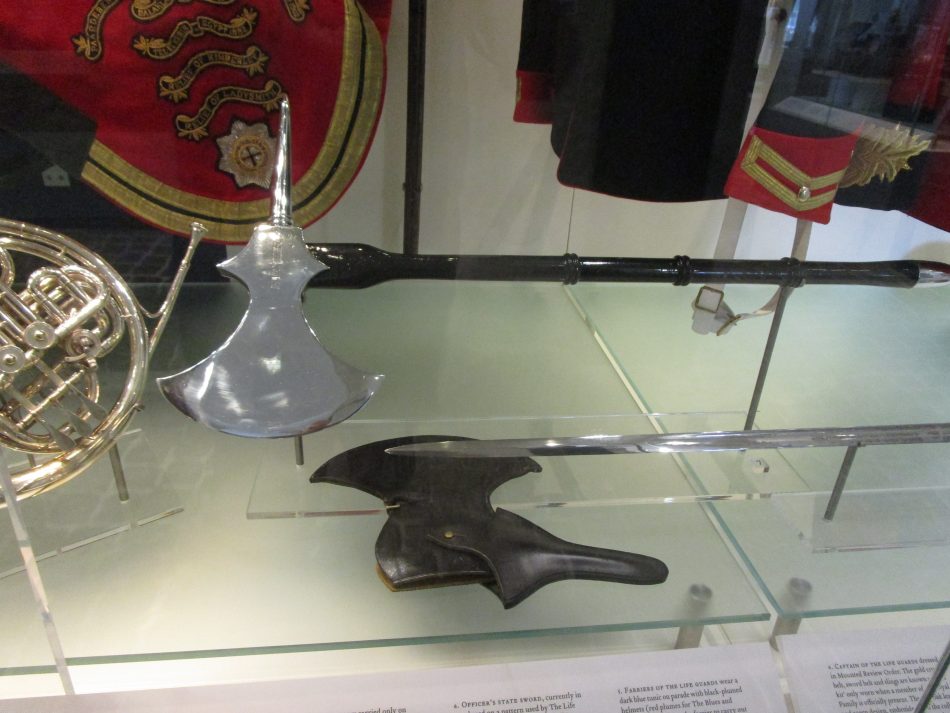
Another reminder that the Household Cavalry are first and foremost active combat soldiers.
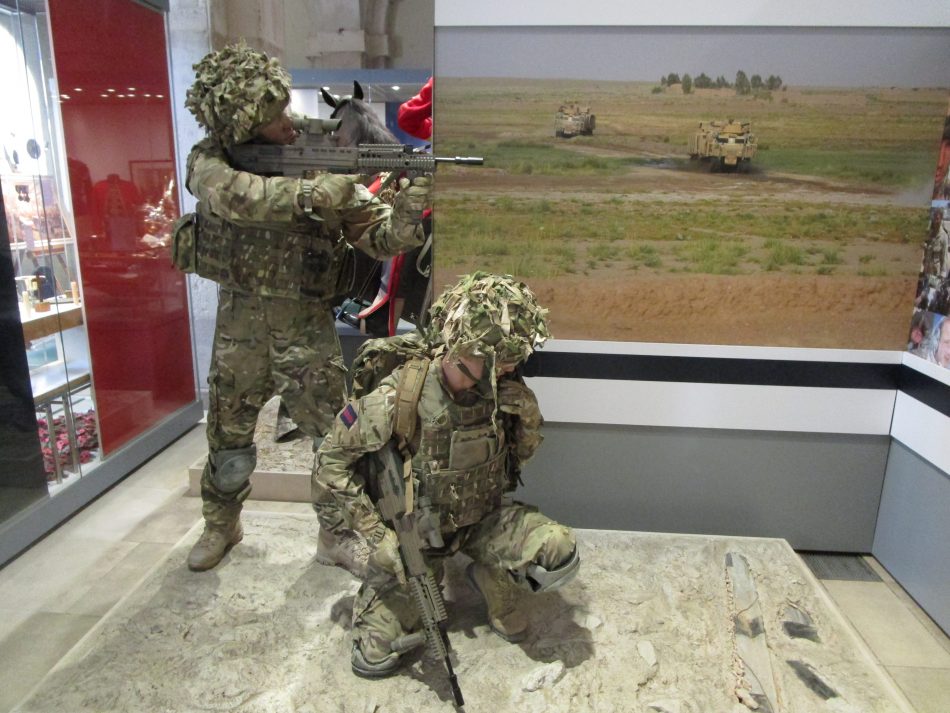
Some of the items on offer (as the Brits say) at the museum shop.
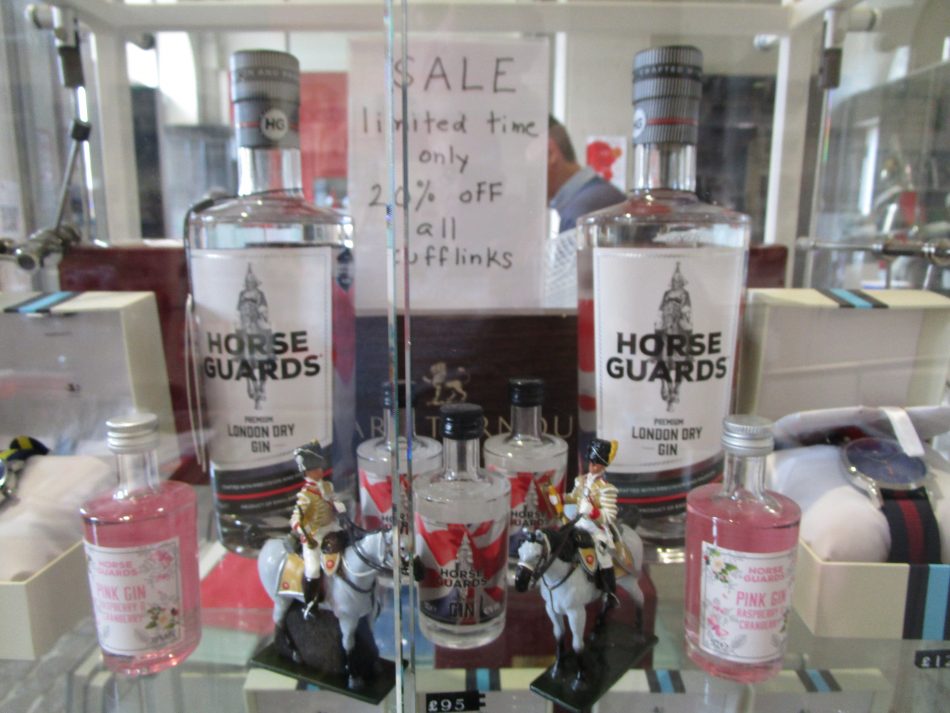
I found this museum to be a bit disappointing. It was very small and didn’t have a lot of artifacts, especially when compared with the Guards Museum not far away. Fortunately, I only had to pay five pounds. Having said that, when taken as a whole with the mounted changing of the guard and the chance to take photos of the mounted guards, it’s well worth visiting.
I found this pub just a two-minute walk from the museum towards Trafalgar Square. I think I’ll pop in next time I’m in London.

The Fusiliers Museum at the Tower of London
I grouped this museum with the Household Cavalry Museum as both are small and don’t each warrant their own article. The Fusilier Museum is located within the walls of the Tower of London. Admission is free, but you would have already paid 33.60 pounds to get onto the Tower grounds. Tower of London | Historic Royal Palaces (hrp.org.uk) That is a lot of money, but there is a lot to see (including the crown jewels) at the Tower. So, to get your money’s worth, you might as well check the Fusiliers Museum. Of course, the Tower is well worth seeing, especially if you are into older arms and armour. I was advised to tell the Beefeaters that I was Canadian military, but I couldn’t get close to them due to all the adoring older American women asking them questions.
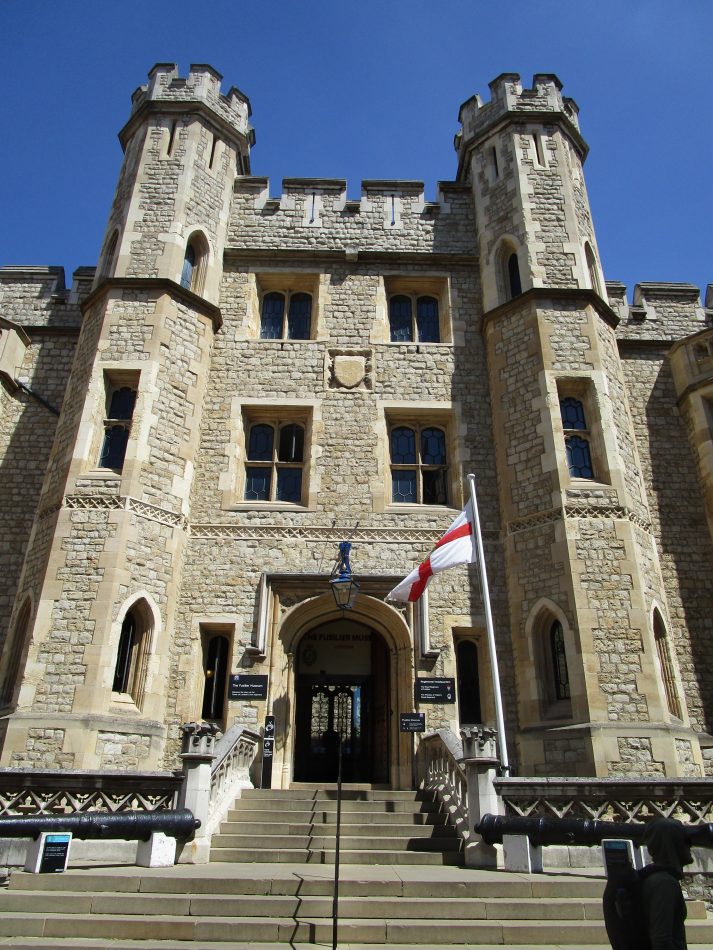
The Fusiliers are affiliated with The Royal Canadian Regiment (The RCR). In the headquarters building is a small apartment for visiting officers. Canadian RCR officers are able to make use of the apartment and I know of a couple who have taken advantage of the opportunity. One even got a front-row seat to the Queen’s Keys ceremony one evening. The Ceremony of the Keys – Tower of London Tour
The Fusiliers were raised at the Tower of London in 1645 and have had a presence there ever since. Today, the building houses the Regimental Head Quarters, the officer’s mess, and the museum. There are literally dozens of these small regimental museums throughout the UK. Each of them has their own unique artifacts.
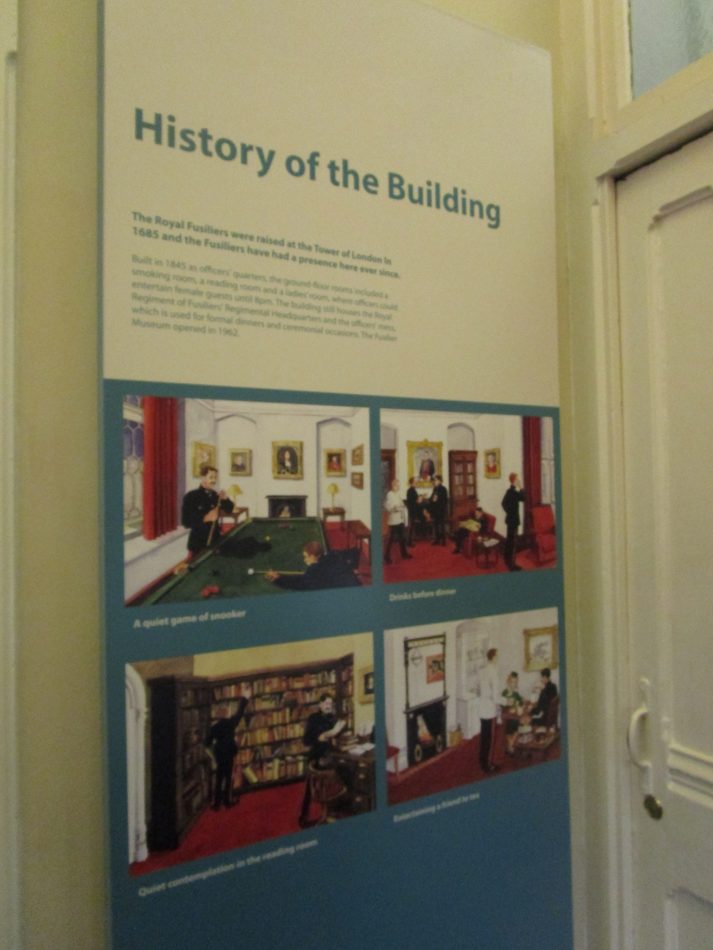
As I may have mentioned in a previous article, you don’t join the British Army, you join a regiment.

There are literally dozens of these small regimental museums throughout the UK. Each of them has their own unique artifacts. Below is a punishment boot. Despite the harsh punishments that soldiers were given for offenses such as absence and desertion, men still went to great lengths to avoid the most brutal aspects of army life.
Lashing was a common punishment in the Army but was not seen as overly harsh by superiors. This iron boot was put on the leg of R. Reginauld, who was suspected of aggravating his wound in order to avoid his duties. After 12 days in the boot, the wound had healed completely, so Reginauld was sentenced to 500 lashes by Regimental Court Martial. The back of the boot is painted with the words ‘A Cure’.

This is their Korean War display.
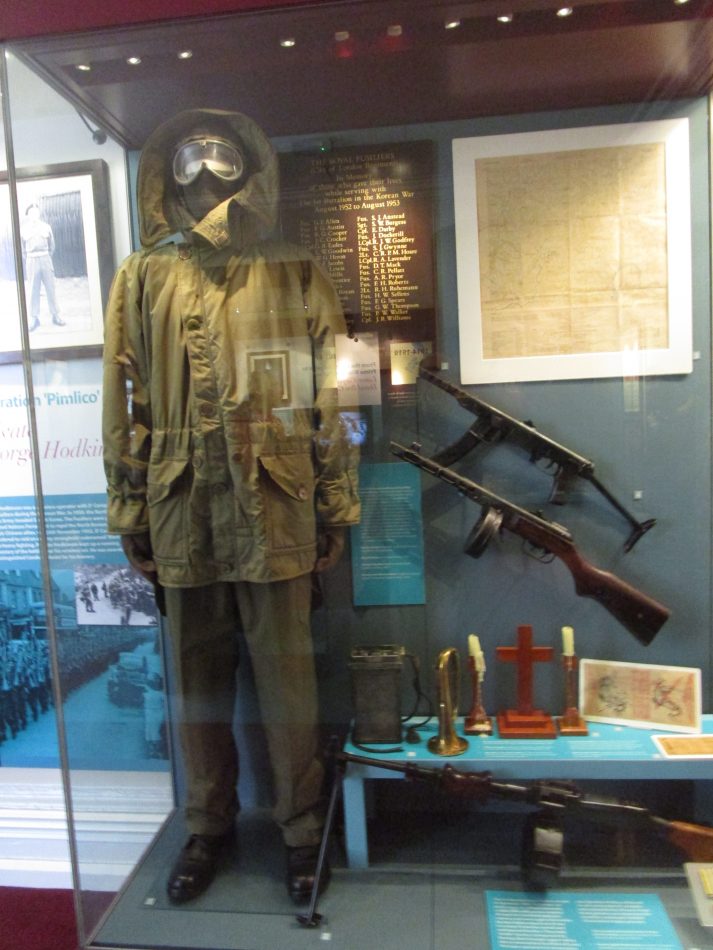
Here we have King George V in full uniform, who was the Colonel in Chief until 1936.
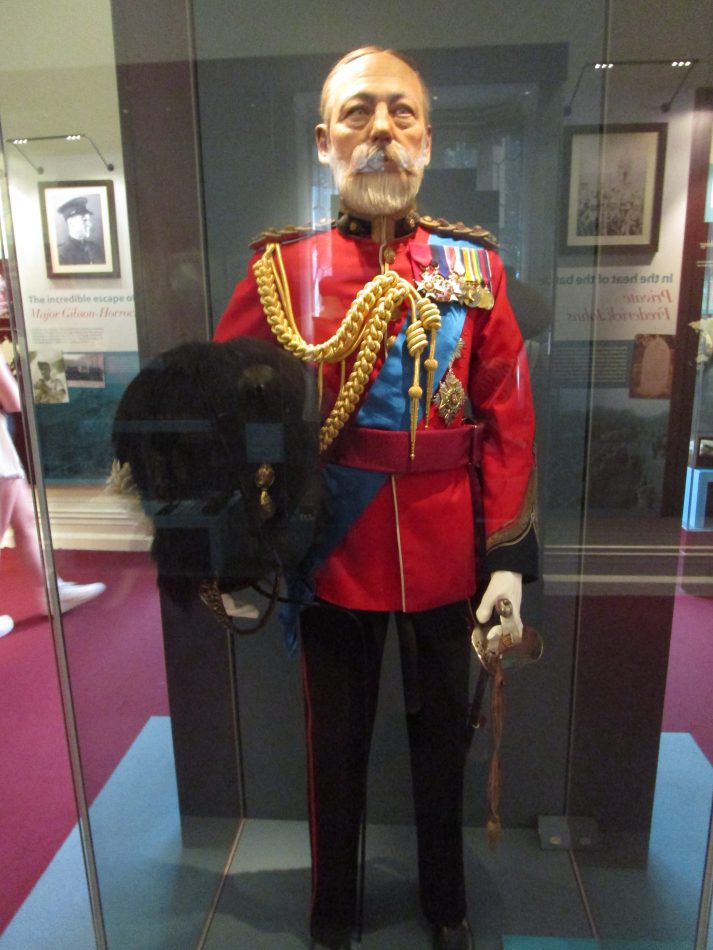
I think we all recognize this guy.
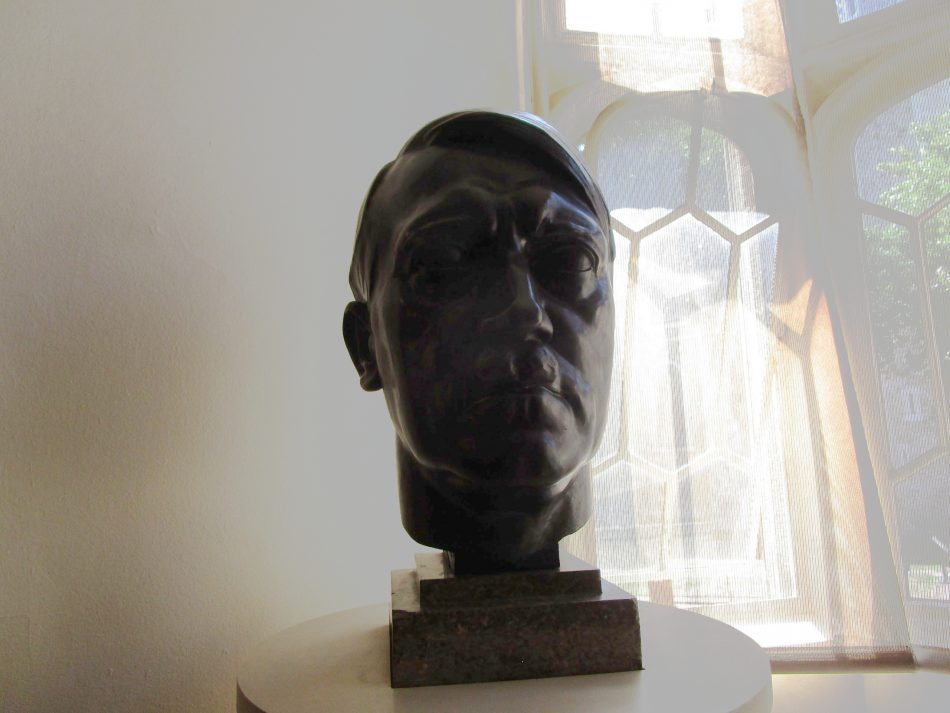
A modern-day Fusilier.
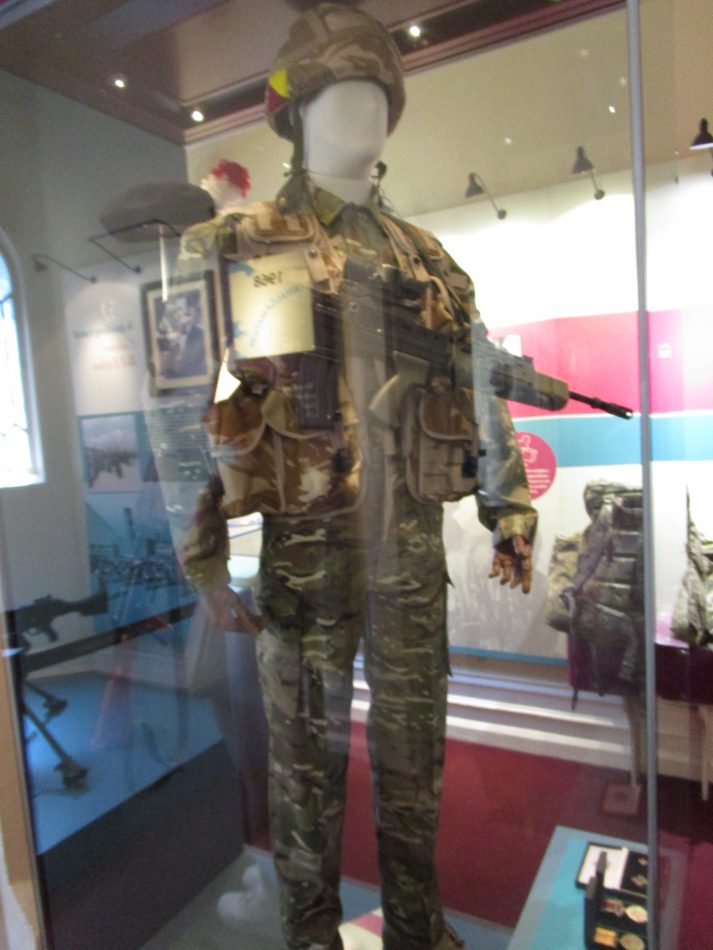
This is a display where you are invited to see if you can carry a soldier’s rucksack or Bergen as the Brits would say.
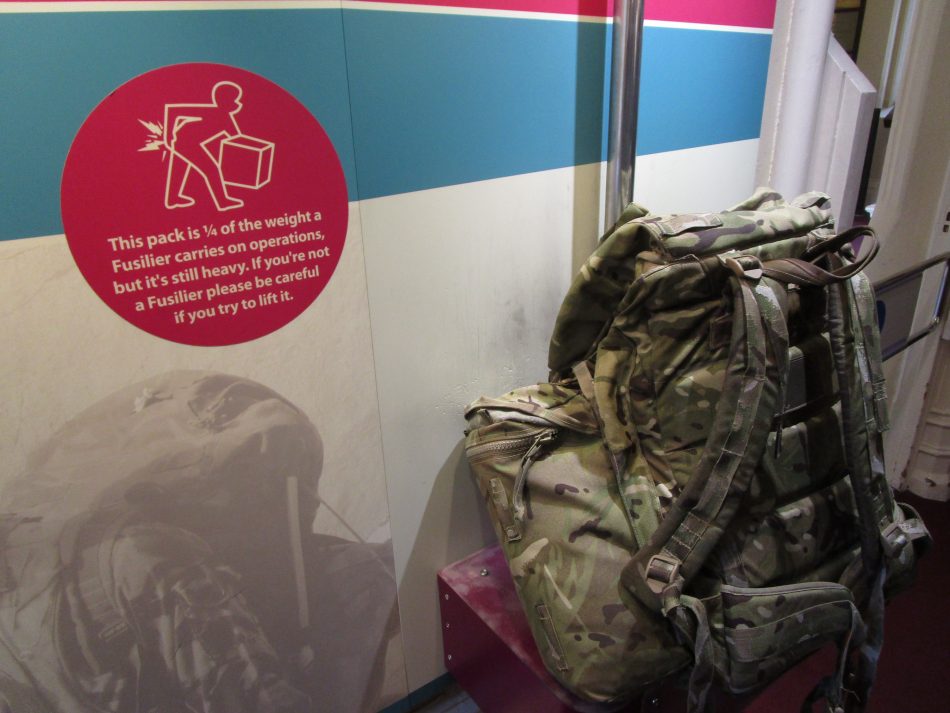
The museum has a medals room with an impressive number of Victoria Crosses.
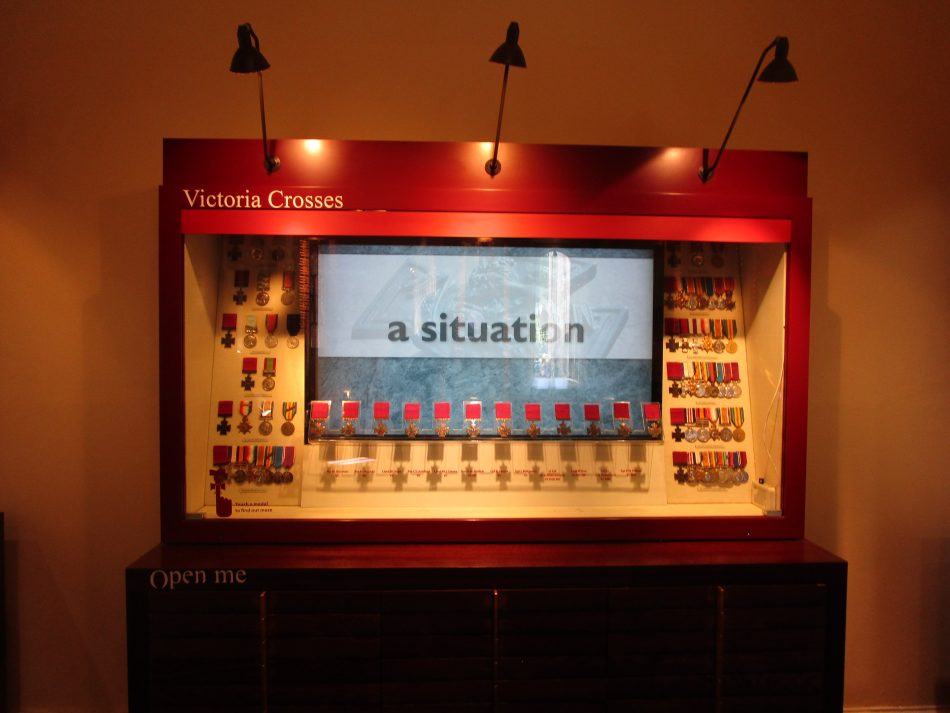
This is a very small museum but has some interesting artifacts nonetheless. If you are visiting the Tower you should take the opportunity to check it out.
More photos can be found here.
Guards, Household Cavalry and Fusiliers Museums 2022 | Flickr
Next up will be another London military museum.
